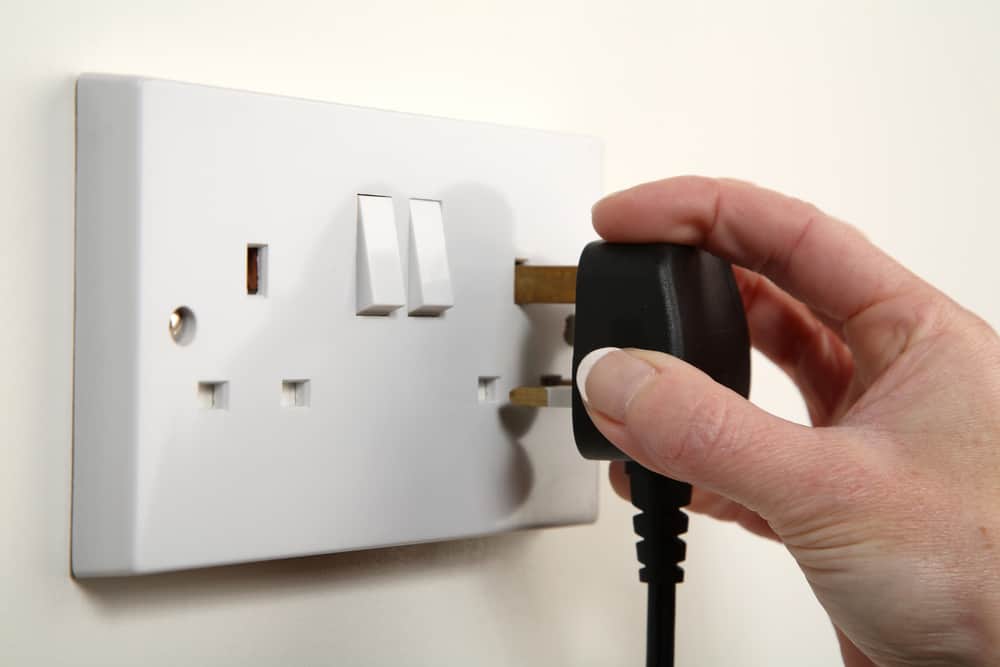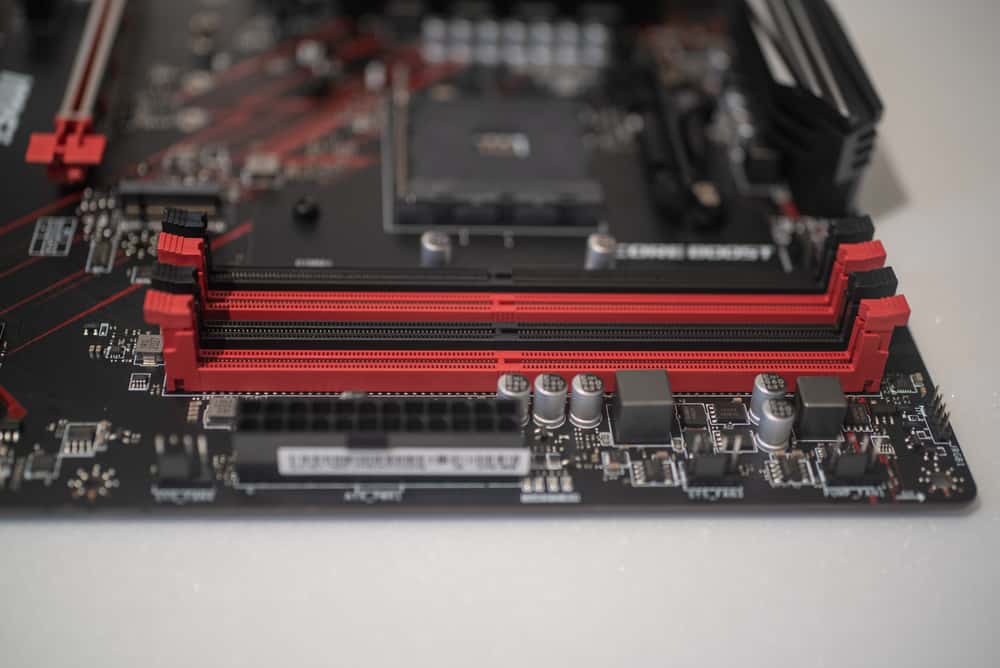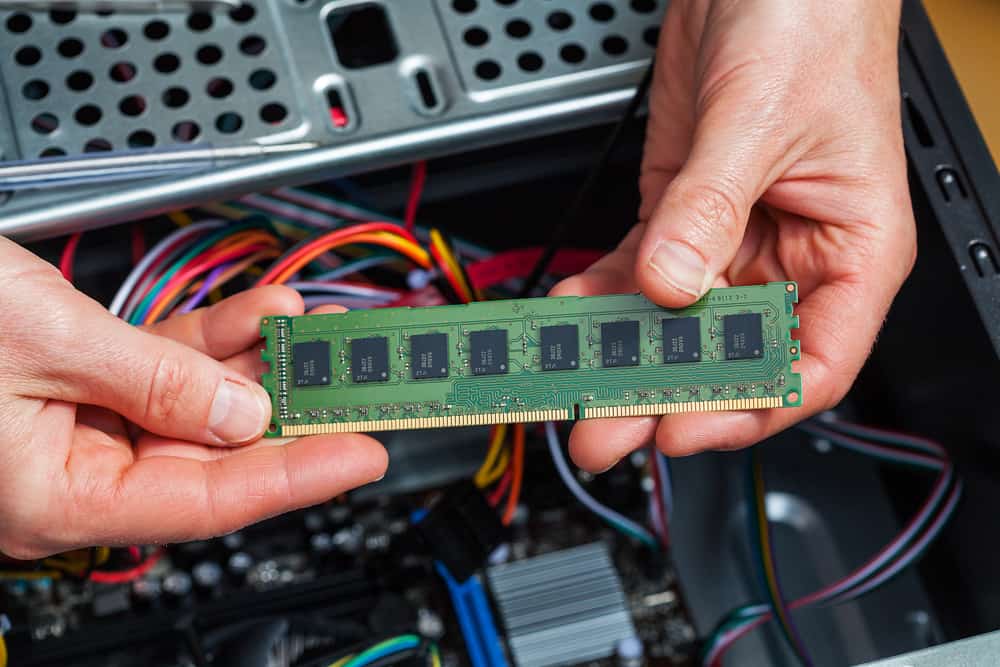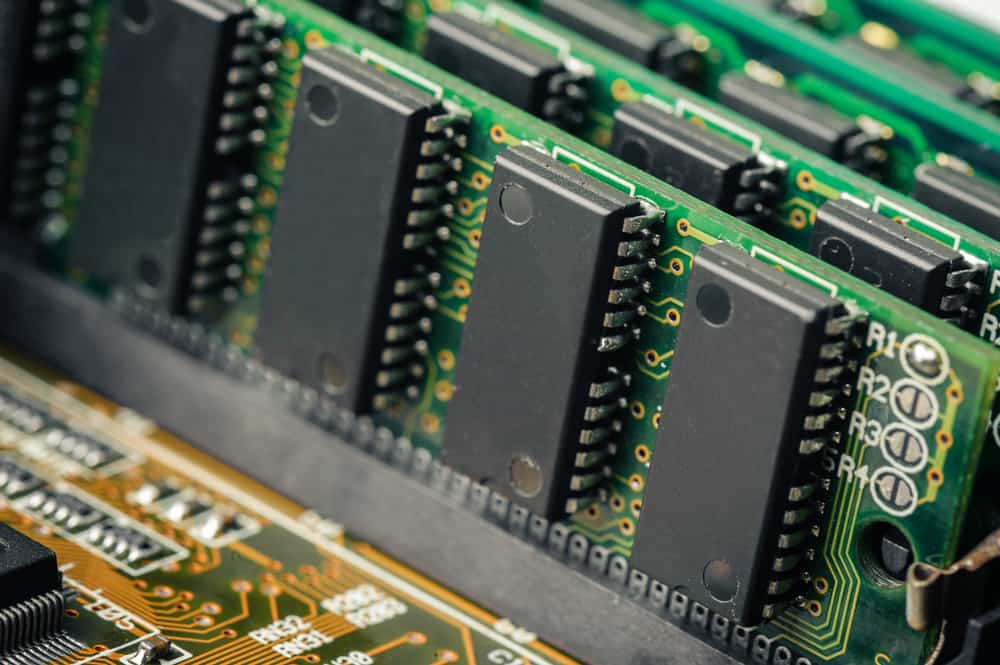
Upgrading your RAM can be a great way to increase your system capacity and performance.
While it’s a straightforward process, changing RAM sticks can cause severe issues if you’re not cautious.
For example, you may not be able to boot up your system, and when you do, you’ll see a black screen.
In such a case, finding the root cause isn’t tricky, but it can be lengthy and tiresome.
This guide outlines all possible causes that lead to a black screen after a RAM upgrade and how you can fix them.
1. Power Issues

When installing new RAM sticks, you need to unplug and disconnect all cables and wires.
That’s why, before looking for more severe problems, you should make sure all power cables and connections are working.
There’s a high chance that a power cable may not have been inserted firmly after installing the RAM sticks.
Make sure to inspect all connections, including the power cord and wires.
Any loose connections can make your computer not boot up properly, and you’ll experience a black screen, so don’t just inspect the power cords.
Check all internal wiring by running your fingers along them and examining the connections.
Make sure your CPU, PSU, and other components are firmly connected, and nothing is loose.
The most critical component you should check is the GPU, as it’s directly related to the screen issue.
Make sure it’s correctly seated, and its connections are okay.
You could also reseat the GPU and see if it helps.
2. Incompatible RAM Sticks

One of the most important causes of experiencing a black screen after installing new RAM is that its configuration is incompatible with your system.
For example, if your motherboard can only support 4GB of RAM and you install an 8GB stick, it won’t be able to read the newly installed RAM, running into different issues like a black screen.
That’s why you should go over your system requirements and choose RAM sticks that don’t exceed your system’s capacity.
The compatibility parameters include CPU, motherboard, and other RAM sticks.
You can find this information by going online and searching for your PC model.
Alternatively, you could go to the Task Manager by pressing Ctrl + Shift + ESC.
Under the Performance tab, select Memory to see all the properties of the RAM installed on your device.
Another thing you should check is if the RAM you’ve purchased and installed is compatible with your motherboard or not.
The number, size, frequency, and other RAM specs are all important and depend on the motherboard’s specs.
You can find this information in different ways, including third-party tools, such as CPU-Z.
If you know your PC’s model and build number, you can find this compatibility information online and on the manufacturer’s website.
Getting this information is straightforward using the command prompt.
Type Command Prompt in Cortana’s search box on the taskbar and press enter to open the app.
Enter the following command in the command prompt window to get the motherboard model and build number.
wmic baseboard get product,Manufacturer
Give this information to any online tool, and you can get all the RAM specs compatible with your motherboard and CPU.
You should also ensure the new RAM’s size is within your operating system’s limitations.
For example, if your Windows is 32-bit, it can accept different size RAM sticks than a 64-bit Windows.
Finally, you need to check if you’re using the correct RAM stick types.
There are five types of RAM: DDR1, DDR2, DDR3, DDR4, and DDR5.
If your computer supports DDR3 and you put DDR4 in the slots, the system will experience compatibility issues and develop problems like the black screen.
You can find out which type of RAM your system supports in the Performance tab of Task Manager.
You could also check the RAM type by physically inspecting it as it’s printed on the RAM stick.
The RAM modules should also be compatible with each other.
That’s why it’s recommended to get your RAM modules from the same company with the same size, speed, and type to avoid any incompatibility issues.
If you’re experiencing a black screen after installing new RAM, you should check all these compatibility issues and make sure you haven’t missed anything.
3. Faulty RAM Slots

If your computer worked fine before upgrading your RAM sticks and the black screen issue appeared after, the chances of faulty RAM slots are low.
However, anything could happen, and you need to consider every little possibility.
After installing the new ones, you may have damaged the RAM slots, so it’s better to ensure the slots are working properly.
The only way to check RAM slots is through trial and error.
It seems tedious, but it’s the only way to find the culprit.
Take out all the RAM sticks, get a RAM stick that you’re sure isn’t faulty, put it in a RAM slot, and boot your computer.
If your computer starts without the black screen, you’ll know the slot is working, so you should shut down the computer, unplug all the cords, and work with another slot.
You should do the same with each RAM slot, one at a time, to isolate the faulty slot.
If you find out that one or more RAM slots aren’t working, there’s not much you can do yourself.
All you can do is inspect the slots for any signs of physical damage or clean them if you see any dust and debris.
The signal levels are so tiny in the case of RAM connections, so every minute piece of dirt and debris can obstruct the connection.
Even skin oils can contaminate these connections and affect their performance.
Carefully clean the connections and slots while being super cautious not to damage them.
If the problem isn’t solved after cleaning, you should take it to a technician to replace the slots or the entire motherboard.
You can’t replace the slots yourself because it needs lots of soldering and delicate work, which can damage other components if done incorrectly.
4. Faulty RAM Sticks

Even if the RAM sticks are brand new, there’s a high chance that they’re not working, particularly if you haven’t bought them from a reputable brand.
In addition, the connections on RAM modules are fragile and sensitive, which means you could easily damage them if you don’t handle the modules carefully while installing them.
To check the health of RAM sticks, you’ll have to go through the same tedious and long process of trial and error described above.
The only difference is that you should take each RAM stick and insert it into a slot that you’re sure is working.
Turn on and boot up the system and see if it starts normally.
Repeat this process for all RAM sticks until you can finally identify the faulty RAM stick.
If any of them is faulty, you should replace it with a new one.
5. RAM Sticks Not Installed Properly

If you’re 100% certain you’ve got the right type and size of RAM sticks and all the slots are working properly, you should check if you’ve inserted the sticks properly.
It would be worth going through the installation process again before doing any extreme solutions.
RAM modules are keyed, which means they come with a gap in the connector that allows you to connect it only in one way.
Installing the RAM module incorrectly is virtually impossible.
However, you may not have exerted enough force to insert the module until all connections are touching fully.
After shutting down the system and disconnecting all the cables and connections, open the case by unscrewing the screws or popping out the pins, depending on the model.
For a laptop, you need to open the back panel by referring to the user manual, as laptops may have different designs.
Ground yourself by touching an unpainted piece of metal inside the case or wearing a wrist strap.
Now, take the RAM module by its sides without touching the gold connections and carefully place them inside the slots.
You should hear a click from the locking mechanism when the modules sit inside the slots, and they should be firm without moving or wobbling.
6. Check The Order Of RAM Sticks

Some motherboards require a specific order of RAM sticks, especially if you use different size sticks.
Try moving around the RAM stick along the slots and see if it changes anything.
If you want to use the multi-channel properties of your computer, you should follow the order stated by your PC manual.
For example, if it has four slots and you want to do the dual-channel configuration, you should place the RAM modules based on the color-coding or the numbering specified by the manufacturer.
Although placing the modules in the wrong order may not lead to a black screen, it will cause other performance problems, or you won’t get the most out of your system.
7. Reset Or Update BIOS

If your computer is old and you’re installing new-technology RAM sticks, you may need to update its BIOS to make it compatible with the new RAM technology.
That’s why motherboard manufacturers regularly release firmware updates to stay on top of new technological advances.
Before upgrading your BIOS, you want to get your system up and running by going back to the previous memory config.
Here’s how to upgrade your BIOS:
Before installing the latest BIOS updates, you should know your current version and ensure it’s not already the latest version.
Type system information in Cortana’s search bar to open the System Information app, which gives you any specs you want to know about your system, including the BIOS version.
Now go to the motherboard’s manufacturers’ support page and compare the BIOS version and date provided there with what you have on your system.
Check if the version on the website is newer than your installed version.
It also specifies whether the new update addresses your current issue (memory compatibility).
Download the latest version, unzip the file, and transfer it to a USB flash drive.
Now, restart your computer, and while it’s booting up, press F2 (or any button specified by your system) to enter BIOS.
Look for the update option on the BIOS menu (most computers allow you to update the latest version via the Internet or from a file, so if you haven’t downloaded it, you may be able to update it via the Internet directly).
It’s also a good idea to get a backup of your current BIOS.
If anything goes wrong, you can go back to the previous version without losing your data.
Look for something along the lines of “Save current BIOS data” and click on it to get a backup.
Then, update the BIOS by choosing the option that applies to you and following the on-screen instructions to finish the update process.
After the update, your PC will restart, and you can start working with it.
Turn it off to install the new RAM modules and see if it works.
8. Reset BIOS Via The CMOS

If you can’t update your BIOS using the above method, you can physically reset it using the CMOS.
The CMOS (complementary metal-oxide-semiconductor) is a type of memory on the motherboard that stores BIOS.
If you have the black screen after installing new RAM modules or any other reasons, you could try resetting the CMOS.
You can reset the CMOS in two different ways:
A. Using The Jumper Key
There’s a jumper key on the motherboard that’s usually located near the CMOS battery.
If you can’t find it, check your motherboard’s manual to find its location.
The jumper key is the three pins near the battery, so it’s difficult not to see it.
Resetting the CMOS means moving the jumper key along these three pins.
You could either put the jumper on pins 1 and 2 or 2 and 3.
The default position is 1 and 2, so you should move it the 2 and 3, wait for five minutes, and go back to the default position.
After resetting the BIOS, turn on the system and see if the black screen goes away.
B. Removing The Battery
Alternatively, you could remove the CMOS battery to reset the BIOS.
After turning off the system and removing all the power cables, connections, and peripherals, open the case and locate the battery.
The CMOS battery is a coin battery, which may be in a holder or connected to the motherboard through a wire.
In the second case, you need to disconnect the wire.
After removing the battery, wait for five minutes, and reconnect it.
Put the case cover back on, connect all other power cables, and turn on the system.
9. PSU Problems

If none of the above methods worked, it’s safe to assume that the issue isn’t memory-related and lies somewhere else.
There’s a high chance that you have damaged your components if you didn’t ground yourself while changing the RAM sticks.
Check if your mouse and keyboard lights are on.
If they aren’t, there might be a power issue, which can be due to a wider range of reasons.
You should check if your PSU is Okay.
After ensuring all the connections are properly in place, you can perform the paperclip test to see if the PSU has power.
Here’s how to do the test:
- Turn off your computer and unplug all the cables.
- Press the power button for a few seconds to drain any residual charge.
- Open the case and power off the PSU, too.
- Remove all the cables, leaving the 24-pin cable and the main AC cord.
- Take a paperclip and bend it into a U shape.
- Locate pins 4 and 5 on the 24-pin cable and insert the paper clip ends into these two pins. Note that if you don’t identify the pins correctly, you’ll damage the PSU.
- Now turn the PSU back on and see if its fans work. If they do, the PSU is okay, and you should look for other causes.
Check PSU Wattage
You may exceed the PSU wattage when you add new RAM modules to your PC, although it’s highly unlikely.
Check the output rating of your power supply on the sticker label on the PSU and see what percentage of it is used by the new memory sticks.
You could use free online tools that calculate power supply and see if you’ve exceeded its limits.
NEXT:Why Do Computers Use Binary? (Explained)